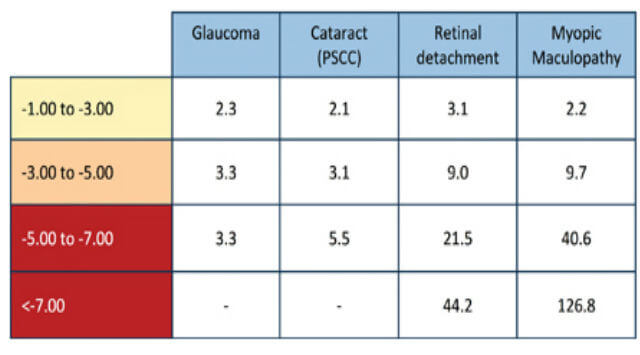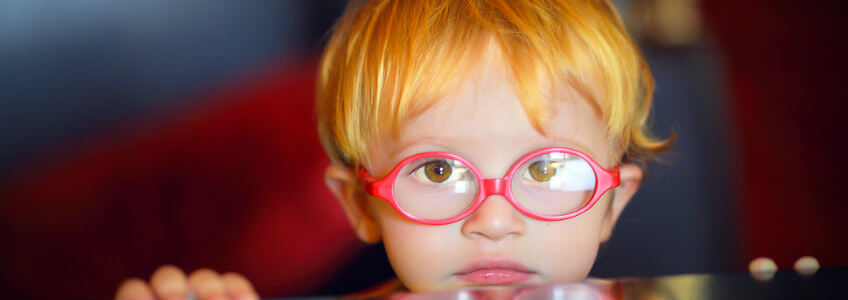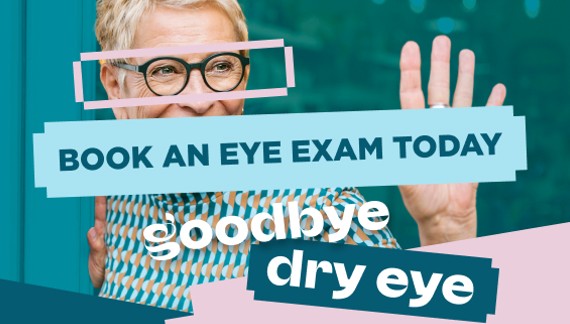What is myopia?
Myopia (short-sightedness) is usually a result of excessive axial lengthening of the eye ball. The prevalence of myopia has increased significantly worldwide in recent years as lifestyle, education and work demands change in the modern digital world. In a recent Sydney study, it was found that the incidence of myopia in 12-year old children of European Caucasian ethnicity almost doubled over the past 5 years (French et al. 2013). In some East Asian countries the incidence prevalence is over 90% in young adulthood (Lin et al. 2004; Jung & Lee 2012).
Whilst childhood myopia can be easily corrected with glasses or contact lenses, the concerns with childhood myopia are with the likelihood of myopic progression. The younger a child develops myopia, generally the higher the risk of this developing over an extended period into adulthood (Donovan et al 2012). More eyeball elongation not only reduces vision but increases the lifetime risk of many ocular conditions, including glaucoma, posterior subcapsular cataract (PSCC), retinal detachment and myopic retinal degeneration compared to the emmetrope(the normal refractive condition of the eye, in which the rays of light are accurately focused on the retina). For someone who develops “high myopia” in the range of -5.00D and above, the lifetime risk of retinal detachment is 21 times higher, and the risk of macula damage, 40 times higher than the emmetrope (someone without refractive error) as summarised in the table below ( Flitcroft 2012; Gifford 2016).

Myopia Control Treatment Options
Environment
Children who spend less than 90 minutes outdoors per day and more than three hours on near vision tasks outside of school time are at the highest risk of development and progression of myopia (Flitcroft 2012).
Outdoors sunlight exposure has been found to reduce likelihood of myopia, and more recently, myopia progression. It is recommended two hours outdoors play per day.
Spectacles
Certain special spectacle lens designs can provide a small amount of myopia control. Conventional single vision lenses only allow central vision to be focused on the retina while peripheral vision may still be defocused, postulated to promoting eyeball growth (Hoogerheide & Hoogenboom 1971; Rose et al. 2008)
MiyoSmart® is an innovative spectacle lens for myopia control developed by Hoya together with its research partner, The Hong Kong Polytechnic University. Based on a two-year clinical trial results (Lam et al 2020), MiyoSmart® is proven to curb myopia progression by up to 59% and halt myopia progression by 21.5% 3 with its award-winning D.I.M.S. (Defocus Incorporated Multiple Segments) technology
Sometimes bifocals or progressive lens designs are also prescribed for children with associated binocular vision problems. There is clinical evidence that applying bifocal or progressive lenses to progressing myopes demonstrating a certain binocular vision profile has a myopia control effect of 38 to 47% (Cheng et al 2010, Yang et al 2009). For a child with normal binocular vision though, these spectacle lenses have no clinically significant effect (Sankaridurg et al. 2010; Yang et al 2009). It is vital that a comprehensive binocular vision assessment is performed on a myopic child in order to determine the more appropriate spectacle choice.
Atropine eye drops
Atropine, an antimuscarinic drug, traditionally used in eyecare, for amblyopia management and ocular inflammation, has long been known to be helpful in slowing myopia progression. Studies have shown that Atropine eyedrops, give one of the highest levels of myopia control, with up to 50% reduction in the progression. Traditionally a dosage of 1% Atropine has been used. However this tends to produce side effects such as pupil dilatation, blurry vision, photophobia and rare systemic side effects. Recent studies show that at much lower concentrations can achieve a similar effectiveness in myopia control as Atropine 1%, with minimal effects on accommodation or pupil size a with a much lower adverse event profile (Chia et al. 2016). On cessation, there is also a much lower rebound effect (accelerated axial growth) compared to that shown in higher concentrations (Chia et al. 2016).
The drops are not currently available commercially, but can be made up through a compounding pharmacy with a prescription from our optometrists. The eyedrops can be used safely once daily in conjunction with spectacles or contact lenses.
Repeated Low-Level Red-Light Therapy
A simple and effective myopia control therapy developed especially for children. Using patented technology to deliver Repeated Low-Level Red-Light (RLRL) therapy, the Eyerising Myopia Management Device unit gently stimulates blood flow in the ocular fundus to alleviate sclera hypoxia and control the axial lengthening that causes myopia.
Therapy involves looking into the device for 3 minutes of treatment, twice a day, 5 days per week, with a minimum of 4 hours between sessions. The device is controlled with a simple touchscreen and is suitable for children as young as 3 years of age.
Technical Introduction - Eyerising Myopia Management Device from Eyerising International on Vimeo.
Refractive laser surgery
May be a corrective option once myopia has stabilized. This is usually not recommended until aged in your mid 20’s or sometimes later, depending on the stability of your prescription. It is not useful for progressive myopia, and especially not for young children. Surgery as an adult certainly can correct the eyesight and eliminates the need to wear glasses or contact lenses, but it does not rid of the fact that the eyeball has already elongated and has an increased risk to ocular complications (see table 1) . Higher prescriptions can also make it more difficult to have laser refractive surgery, hence myopia control at a younger age increase the chances of being able to have laser refractive surgery later on.
Contact Lenses
- Orthokeratology (also known as corneal refractive therapy or Ortho-K) is the programmed use of rigid contact lenses, worn during sleep, to flatten the central cornea whilst steepening the mid peripheral cornea, by displacement of the corneal epithelium (front layers of cells in the cornea) by a controlled amount, to reduce or eliminate myopia. The great appeal of orthokeratology lies in not requiring spectacles or contact lenses during the day. It is similar, in some ways, to the use of dental braces by an orthodontist or dentist to straighten crooked teeth, albeit at a more temporary timeframe because the cornea is highly elastic and always returns to its original shape. Retainer contact lenses are therefore required to be worn either every night or every second night, depending on the elasticity of the cornea and the degree of refractive correction.
- Soft multifocal contact lenses These lenses are used to attempt to control the progression of myopia by correcting for the peripheral hyperopic defocus. The soft multifocal contact lenses have a central distance portion, which corrects for the myopia and a peripheral reading addition, which corrects for the peripheral hyperopia. The main drawback of this lens type is that there can be some visual blur, intentionally in the periphery, but also centrally, which may not be as well tolerated.Soft multifocal contact lenses have shown a 29% reduction on eye growth over two years (Walline et al. 2013). More impressive results have been demonstrated in a patient population with a diagnosed over-convergent binocular vision profile, where a 70% reduction in eye growth was found after 12 months compared to single vision contact lenses (Iler et al. 2016).
- MiSight®
Misight® contact lenses have recently become available in Australia to limited practices. We are delighted to now be able to offer a daily disposable contact lens especially designed for myopia control using an innovative proprietary lens utilising an optimal degree of peripheral defocus. Preliminary data recently presented at the British Contact Lens Association Clinical Conference in June 2017, suggested a 59% reduction in progression, compared to those wearing traditional daily disposable lens designs.









